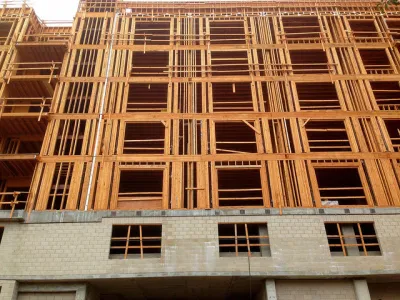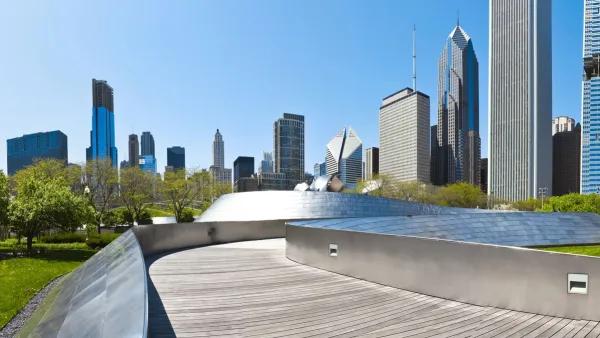Too many new buildings today are simply ugly—with little to add to urban streets, and resembling buildings in every other city. Jason Hart, AIA reviews some design basics, which he hopes will arrest the ugly building epidemic.

"Too many new buildings today are simply ugly behemoths. They have little to add to our urban street scenes, and many look alike from city to city, with the same tired shapes, confused compositions, and bland materials. They give modern a bad name and only help galvanize public backlash – often with good reason," writes Jason Hart, AIA.
He believes that building owners and developers, municipal review boards, and architects, by revisiting the fundamentals, can stop what he refers to as an "epidemic" of ugly buildings:
We could debate the many scapegoats for ugliness: building codes, greed, politics, talent, time, but most of these building designers have simply forgotten the basics. Regardless of architectural style, all design, at its basic core, is the artful control of three elements: size, proportion, and the organization of parts (windows, cornices, columns, etc. for buildings).
Hart goes on to review how each of these elements are utilized and interrelate to make a functional and attractive building. He concludes:
Good buildings start with good planning, they pay attention to how people use them, and they balance size, proportion, and visual organization. Good architecture masters these aspects, and goes further to convey meaning and purpose through ideas, history, and technology that contributes to the identity of our communities. We don’t have to settle for ugly buildings; we can demand better.
FULL STORY: Stopping the Ugly Building Epidemic with Design Basics

National Parks Layoffs Will Cause Communities to Lose Billions
Thousands of essential park workers were laid off this week, just before the busy spring break season.

Retro-silient?: America’s First “Eco-burb,” The Woodlands Turns 50
A master-planned community north of Houston offers lessons on green infrastructure and resilient design, but falls short of its founder’s lofty affordability and walkability goals.

Delivering for America Plan Will Downgrade Mail Service in at Least 49.5 Percent of Zip Codes
Republican and Democrat lawmakers criticize the plan for its disproportionate negative impact on rural communities.

Test News Post 1
This is a summary

Test News Headline 46
Test for the image on the front page.

Balancing Bombs and Butterflies: How the National Guard Protects a Rare Species
The National Guard at Fort Indiantown Gap uses GIS technology and land management strategies to balance military training with conservation efforts, ensuring the survival of the rare eastern regal fritillary butterfly.
Urban Design for Planners 1: Software Tools
This six-course series explores essential urban design concepts using open source software and equips planners with the tools they need to participate fully in the urban design process.
Planning for Universal Design
Learn the tools for implementing Universal Design in planning regulations.
EMC Planning Group, Inc.
Planetizen
Planetizen
Mpact (formerly Rail~Volution)
Great Falls Development Authority, Inc.
HUDs Office of Policy Development and Research
NYU Wagner Graduate School of Public Service





























